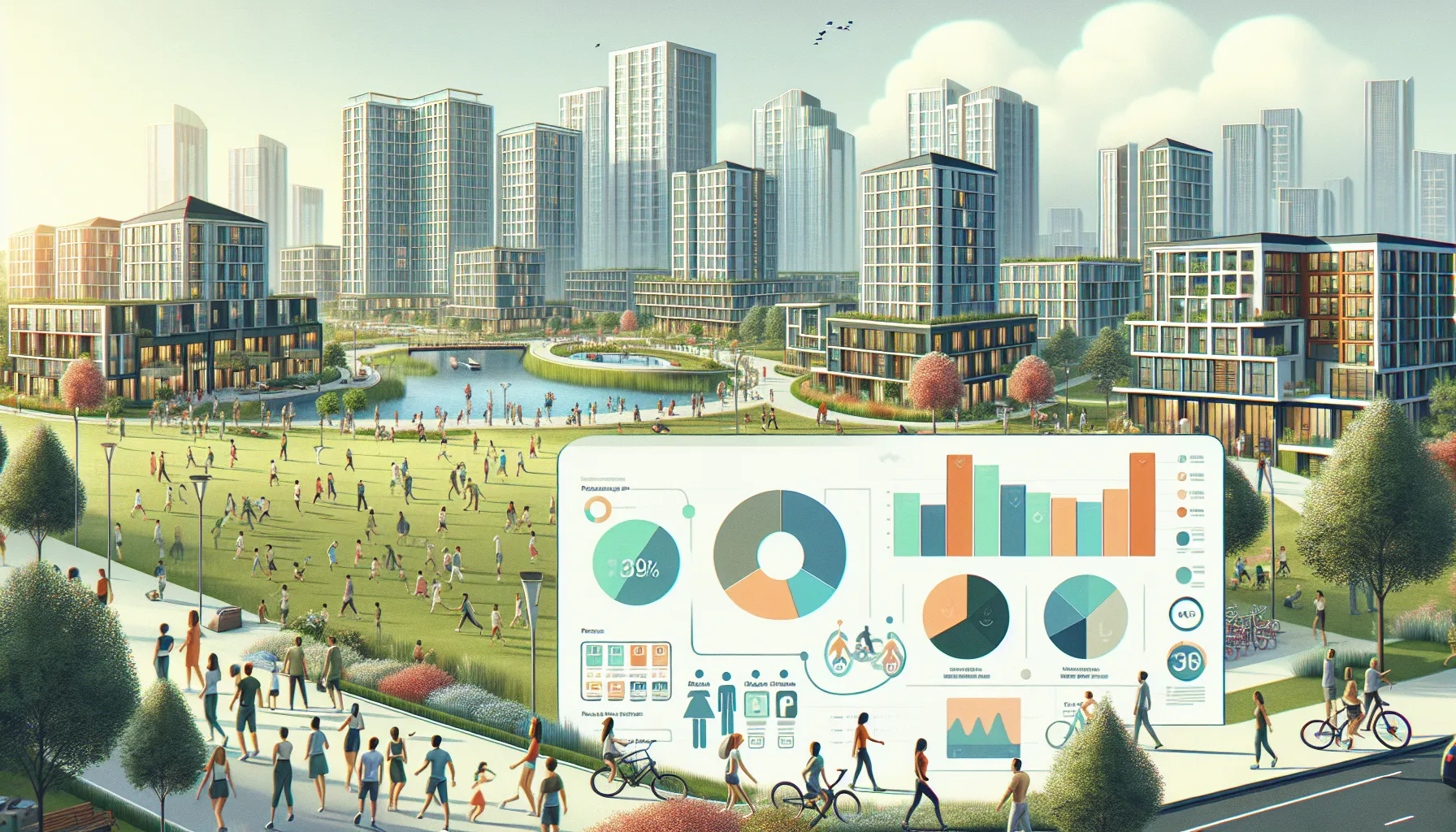Key Takeaways
- Menlo Park’s rental vacancy rates are influenced by economic trends, housing developments, and population growth, with low rates typically signaling strong demand in this competitive market.
- Current vacancy rates in Menlo Park average between 3% and 4%, lower than national and regional averages, making it a favorable environment for property owners but challenging for renters.
- Proximity to tech hubs, job opportunities, and the city’s amenities drive demand, while new housing developments and economic shifts may impact vacancy rates and rental pricing.
- For renters, understanding market trends and timing searches strategically can improve opportunities for securing housing, particularly during seasons of lower competition.
- Property investors can optimize returns by leveraging market insights, focusing on high-demand property types, and considering strategic upgrades to attract long-term tenants.
- Staying informed about local rental vacancy trends helps both renters and investors adapt to changes and capitalize on opportunities in Menlo Park’s dynamic rental market.
Rental trends can feel unpredictable, especially in sought-after areas like Menlo Park. Whether you’re a property owner or someone considering investing, understanding the rental vacancy forecast is key to making informed decisions. What factors are shaping the local market, and how might they impact your plans?
Menlo Park’s rental market reflects shifts in demand, pricing, and availability. Vacancy rates can influence everything from rental income to property value. Staying ahead of these trends helps you prepare for opportunities and challenges alike. Are you ready to explore what’s next for this dynamic market?
Overview Of Rental Vacancy In Menlo Park
Menlo Park’s rental market reflects a blend of steady demand and variable supply. The city’s appeal lies in its strong economy, proximity to tech hubs, and quality of life, contributing to its rental popularity. Yet, vacancy rates shift based on economic conditions, housing inventory, and seasonal changes.
Rental vacancies typically decrease when job opportunities grow or new businesses establish themselves nearby. Conversely, spikes can occur if more units enter the market or if affordability becomes a concern for renters. How do these patterns align with your experiences or observations of the area?
The competition for rental properties often results in lower vacancy rates, especially during peak housing demand. This trend creates opportunities for property owners to maximize returns. For renters, however, it raises questions about availability and pricing. Are you noticing how these factors influence your local neighborhood?
It’s crucial to monitor vacancy trends regularly. Doing so helps landlords set competitive rental rates and investors make informed decisions about potential acquisitions. Have you explored how these insights might impact your investment or rental strategies?
Key Factors Influencing Rental Vacancy

Understanding the factors that affect rental vacancy in Menlo Park provides critical insights for property owners and investors. These elements shape the local market, influencing availability and financial returns.
Economic Trends
The local economy plays a significant role in determining vacancy rates. Job growth in nearby tech hubs directly influences housing demand. With high employment opportunities, more individuals and families move to the area, increasing competition for rentals. However, during economic downturns, fewer people relocate, which can lead to higher vacancy rates.
Have you considered how economic fluctuations might impact your rental property? Monitoring job creation and business openings can help estimate the potential demand for housing in Menlo Park.
Population Growth And Demographics
Changes in population size and demographics also affect vacancy rates. Menlo Park attracts professionals due to its proximity to major workplaces and quality amenities. A growing population often results in increased rental demand, but shifts in demographics, such as an aging population, may impact the type of housing required.
How well do you know the demographic trends in this area? Awareness of population changes can guide decisions on renovating or adjusting your property to suit tenant preferences.
Housing Development Projects
Ongoing and new housing developments can shift vacancy rates by adding more availability to the market. Large-scale construction projects or affordable housing initiatives may reduce demand for older rental properties. Conversely, limited new construction can lead to higher competition for existing properties.
Have you thought about how upcoming projects near your property might affect its demand? Staying informed on local housing plans can help you remain competitive in this market.
Current Rental Vacancy Trends In Menlo Park

Rental trends in Menlo Park reflect a market influenced by economic growth, housing inventory, and population shifts. Understanding how these factors are shaping vacancy rates helps property owners and investors make more confident decisions.
Average Vacancy Rates
Menlo Park’s vacancy rates show a relatively stable pattern, often below national averages. Current estimates place average vacancy rates between 3% and 4%, signaling strong demand for housing. This low rate is attributed to the city’s proximity to major tech hubs and excellent amenities. Lower vacancy rates provide opportunities for landlords to attract tenants quickly but can also limit options for renters seeking affordability.
Comparison With Regional Averages
Menlo Park’s vacancy rates compare favorably with nearby cities in the Bay Area. While cities like Sunnyvale and Mountain View often experience similar challenges due to housing shortages, Menlo Park typically has a slight edge in maintaining a balanced market. Regional averages hover around 4% to 5%, while Menlo Park consistently performs marginally better. Lower vacancies reflect a competitive market for renters and profitable conditions for property owners. How does this align with what you’ve experienced?
Predicting Future Rental Vacancy Rates

Anticipating rental vacancy trends requires consideration of local dynamics and external factors. Menlo Park’s market often aligns with economic and housing development shifts.
Market Predictions And Influences
Rental vacancy changes often depend on employment growth, population shifts, and new housing projects. In a city like Menlo Park, proximity to tech companies frequently drives demand. When the local job market expands, more professionals move to the area, causing vacancy rates to drop. Conversely, economic slowdowns may lead to higher vacancies due to reduced demand.
Housing supply also plays a significant role. If ongoing projects add a substantial number of units, availability increases, offering renters more choices and possibly stabilizing vacancy rates. Seasonal fluctuations further influence trends, with rates typically lower during spring and summer as more tenants seek housing. How do these factors align with what you’re observing or experiencing now?
Expected Impact On Rental Prices
When vacancy rates decrease, rental prices often rise due to high demand and limited supply. Menlo Park’s low average vacancy rates, typically between 3% and 4%, suggest a competitive rental market, contributing to steady pricing growth. Affordable units, in particular, may experience elevated demand, further widening price differences across property types.
During periods of higher vacancy, landlords might need to offer competitive rates or incentives to attract tenants. For investors and property owners, understanding these pricing patterns is key to setting rental terms that appeal to potential renters while optimizing returns. Have you noticed shifts in rental pricing or demand within your neighborhood?
Tips For Renters And Investors

Rental market trends in Menlo Park create opportunities and challenges for renters and investors alike. Staying informed can help both groups make smarter, more informed decisions.
Opportunities For Renters
For renters, understanding the rental vacancy forecast can help identify the best times to secure housing. Lower vacancies often mean increased competition, but what steps can you take to stand out? Preparing complete documentation, such as references, proof of income, and credit reports, can enhance your application. This adds efficiency when options are limited.
Timing your search can also make a difference. Are you looking during peak demand seasons like summer? Searching slightly earlier or later might provide more availability and save on costs. Engaging directly with landlords or property managers could also uncover listings before they’re widely advertised. What other tools could you use to make your search more successful?
If affordability is a concern, exploring shared accommodations or older properties may offer more flexible pricing. How can you balance cost savings with your housing priorities? Thinking ahead and making compromises on non-essential features can help manage budget constraints.
Strategies For Property Investors
For investors, low vacancy rates signal strong rental demand, presenting opportunities to maximize returns. Are your properties positioned to attract tenants effectively? Maintaining high standards, addressing maintenance proactively, and offering competitive amenities can keep units occupied while boosting income.
Diversifying property types could also capitalize on various segments of Menlo Park’s housing demand. Families often seek single-family homes, while proximity to tech hubs attracts professionals looking for apartments. Which market segment aligns with your investment goals? Reviewing vacancy trends in specific neighborhoods provides localized insights that can guide acquisitions.
Another key factor is timing your property purchase or lease renewals. How might economic forecasts or seasonal demand affect your profitability? Remaining flexible allows you to adjust strategies as conditions evolve.
Assessing updates or renovations is another way to enhance appeal. Is there potential to increase rental income by modernizing kitchens, adding energy-efficient appliances, or improving outdoor spaces? Strategic upgrades can offer returns far beyond the initial investment.
Both renters and investors benefit from staying actively engaged with Menlo Park’s rental landscape. By asking the right questions and planning ahead, you can navigate this dynamic market more effectively.
Conclusion
Menlo Park’s rental market is a dynamic landscape shaped by a mix of economic growth, housing trends, and shifting demographics. Staying ahead of these changes is key to making informed decisions, whether you’re a property owner, investor, or renter.
By keeping a close eye on vacancy rates and understanding how local and external factors influence the market, you can position yourself to take advantage of opportunities while navigating potential challenges. Menlo Park’s unique appeal ensures it remains a competitive and desirable rental market, making it essential to stay informed and proactive.
Frequently Asked Questions
What are the current rental vacancy rates in Menlo Park?
The current rental vacancy rates in Menlo Park typically range between 3% and 4%, which is below the national average. This low rate reflects strong demand for housing due to the city’s proximity to tech hubs, excellent amenities, and its overall quality of life.
What factors influence rental vacancy rates in Menlo Park?
Key factors include economic trends, job growth, population shifts, seasonal changes, and housing inventory. For example, tech job growth raises demand for rentals, while new housing developments can impact vacancy rates by increasing availability.
How do vacancy rates affect rental prices in Menlo Park?
Lower vacancy rates typically lead to higher rental prices because demand exceeds supply. Conversely, higher vacancy rates may force property owners to lower prices or offer incentives to attract tenants.
How does Menlo Park compare to other Bay Area cities in terms of vacancy rates?
Menlo Park often outperforms nearby Bay Area cities, with vacancy rates slightly better than the regional average of 4% to 5%. This indicates strong and consistent rental demand in the area.
How does job growth in tech hubs affect Menlo Park’s rental market?
Job growth in nearby tech hubs increases demand for housing, leading to lower vacancy rates. More professionals moving into the area can drive competition for available rentals, pushing prices higher.
What is the impact of new housing developments on Menlo Park’s vacancy rates?
New housing developments can stabilize vacancy rates by increasing housing supply. However, during periods of strong rental demand, they may only slightly ease competition and pricing pressures.
When is the best time to look for rental housing in Menlo Park?
Spring and summer typically see lower vacancy rates, making competition for rentals higher. Searching in fall or winter may provide better availability and pricing opportunities for renters.
Why is Menlo Park’s rental market considered competitive?
Menlo Park’s desirable location, near tech hubs and excellent amenities, creates consistently high demand for rentals. With low vacancy rates and limited affordable housing options, competition is intense.
How can investors benefit from low vacancy rates in Menlo Park?
Low vacancy rates indicate strong rental demand, allowing landlords to charge competitive prices. Investors can maximize returns by maintaining properties, offering upgrades, and diversifying their portfolios.
What can renters do to improve their chances of securing housing in Menlo Park?
Renters should enhance their application by preparing documents, offering references, and timing their search effectively. Searching earlier during seasonal slow periods may increase chances of finding suitable housing.
